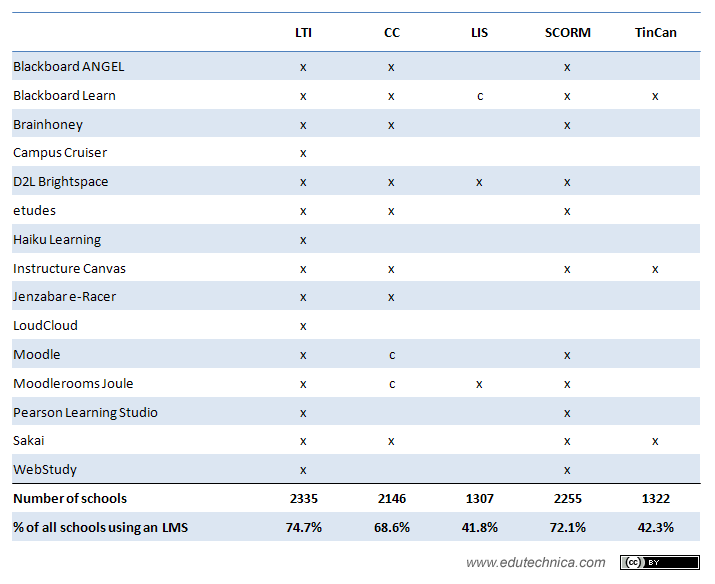Authors’ note: Please remember – this post, and all posts on this web site, are personal thoughts that are not reflective of the opinions or positions of any organization or educational institution to which any of the authors have any real or perceived affiliation.
Upon the receipt of a note asserting that SCORM is not an official standard, we chose to hide this post while we investigated. This post has since then been modified to avoid further confusion. The important lesson that we learned is that standards evolve in different ways over time. Some standards emerge from a single vendor approaching a technical problem in a certain way that is then adopted throughout an industry. Other standards emerge from the hard work of committees of multiple vendors and users that unite around a common cause. Here are links to the official specification documentation and the IEEE standard site that you can use to determine if SCORM is in fact an official standard or not. One additional take-away comes from the comments section below where (to paraphrase) the question is asked “what constitutes support for a standard?” – a question which also provokes healthy debate. If these are topics that interest you, we ask that you please blog about them to surface your concerns.
An article in January explored why online learning needs to get serious about apps and proposed restructuring learning activities to be delivered through individual, purpose-built mobile apps. An article late last year warned us not to get too used to mobile apps in the way that they are currently delivered, hypothesizing that one day the default mobile experience may be an aggregate stream of content and activity flowing from across all installed apps into one screen. The future certainly looks interesting, promising even, but only if the technologies we choose to use work well together. How should universities best plan to accommodate an increasing variety of applications, devices, products, and platforms that support their mission? We would suggest by putting greater emphasis and focus on open industry standards and specifications.
In our minds, there are many categories of standards that can benefit schools. Front-end standards focus on delivery of learning tools and learning content in ways that make it easy for these to plug into any content delivery system or LMS. Back-end integrations facilitate plugging into authentication systems, Student Information Systems, and other source and destination systems of record. Tail-end integrations make it easy to interoperate with analytical data stores, retention systems, and potentially the new concept of Learner Relationship Management systems. But this is only our perspective for what a framework for thinking about standards might look like. Emerging educational technology standards architectures address many of these different problem areas but also address subsets and supersets of similar problems in different ways.
It is important to remain informed not only about the broader direction that different standards bodies are taking but also the adoption rates of existing standards and specifications. We have used our LMS data to determine the adoption of a subset of educational technology standards and specifications including Learning Tools Interoperability (LTI), Common Cartridge (CC), Learning Information Services (LIS), Sharable Content Object Reference Model (SCORM), and TinCan. By cross-referencing the IMS product certification list with press releases and public-facing product documentation, we inferred which LMSs and which versions of LMSs were compliant with these various technologies. Based on this, we compiled the table below. Note that the totals only represent LMS installations where we could verify that both the type and version of LMS supporting the standard or specification. The letter C indicates compliance versus official certification. If support for a standard or specification is provided via an add-on that is not part of the vanilla/base product, we did not include it in this table. Conversely, for products like Blackboard Learn, where TinCan support is built into the SCORM player plugin that ships with their core product, we did include it (Blackboard’s production documentation also notes this support). Note that the specific products that support specific standards and specifications are always evolving, and this is only meant to be a point-in-time snapshot of what we consider to be interesting data. If you do not believe SCORM or TinCan to be official standards, please ignore the right two columns of this table.
It is worth noting that just because an institution is using a standards-compliant product does not mean that the institution is using the standard at all let alone taking full advantage of a standard’s capabilities. Our goal here is to provide some insight into which popular standards and specifications are achieving broader implementation to help institutions make technology decisions. Commercial vendors also take note: if you are developing a new learning tool, your path of least resistance to distributing it is to use open standards. Writing your learning tool to support them can make your product immediately compatible with thousands of universities and hundreds of complementary solutions.
